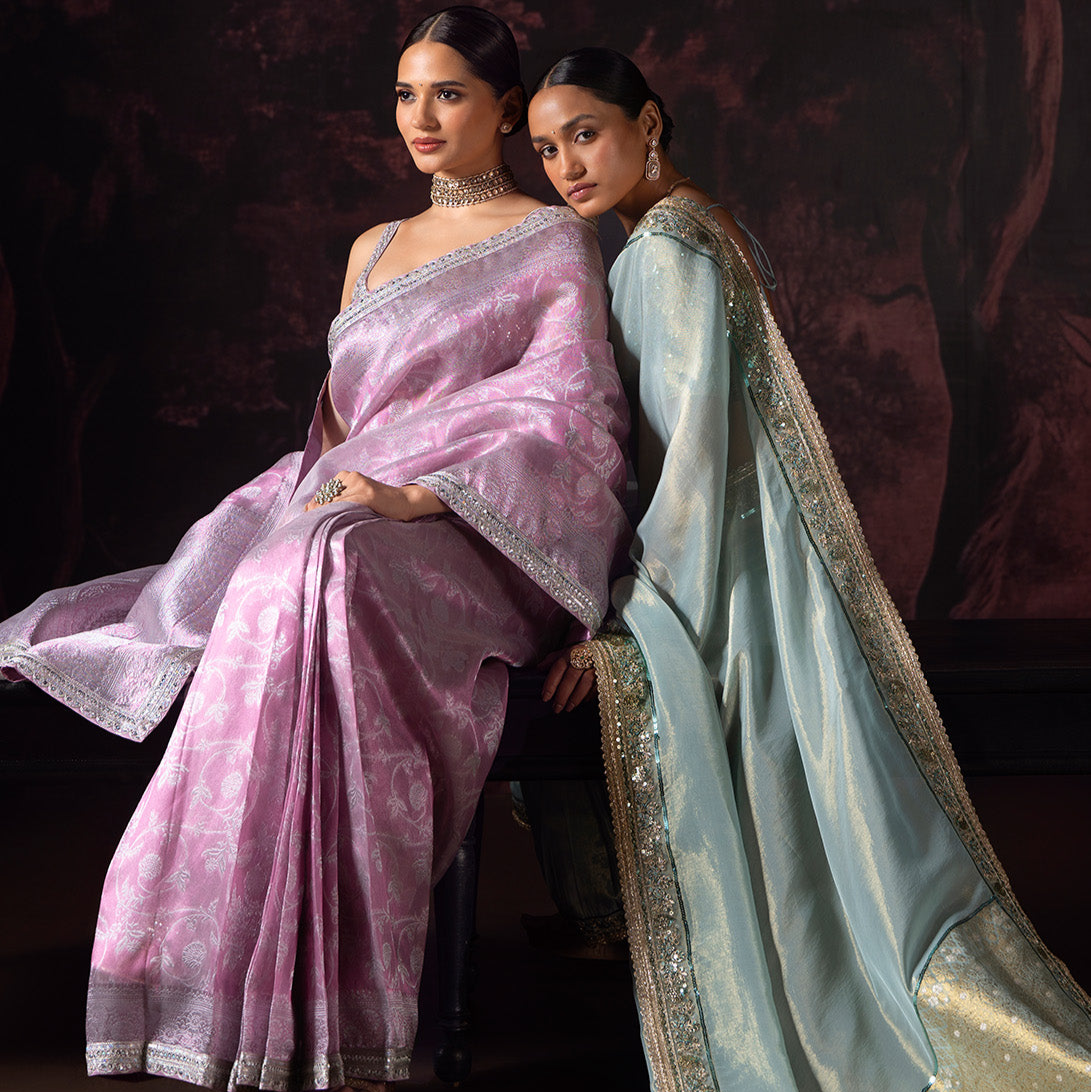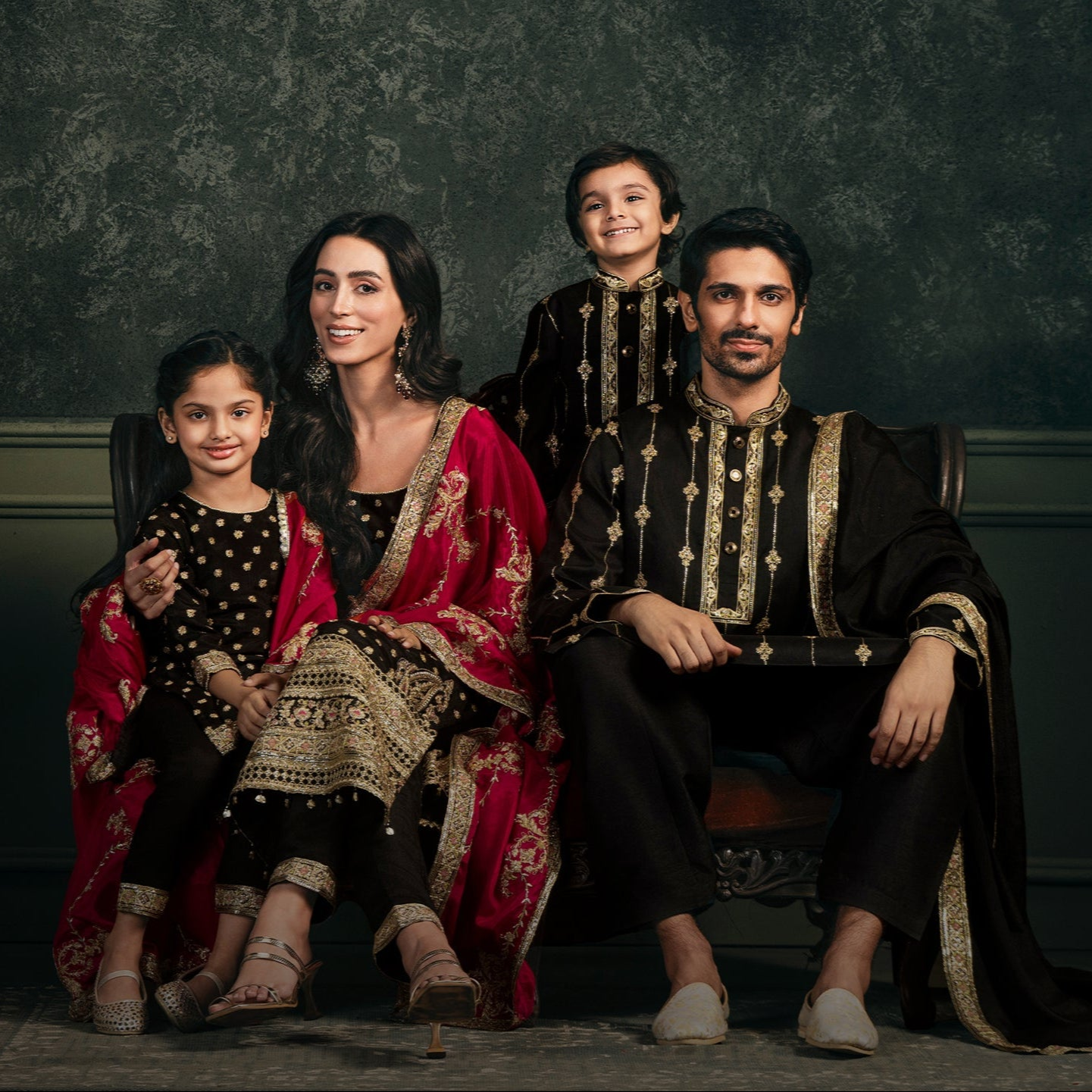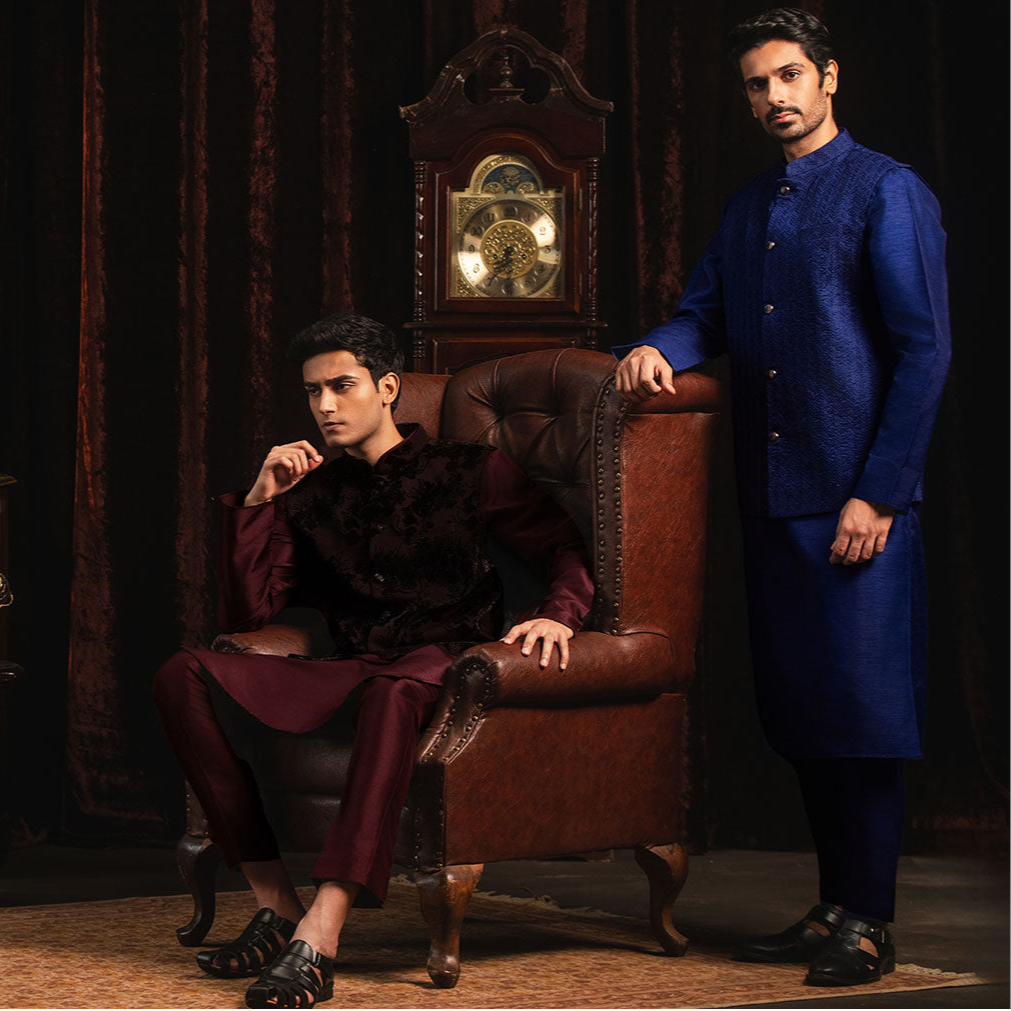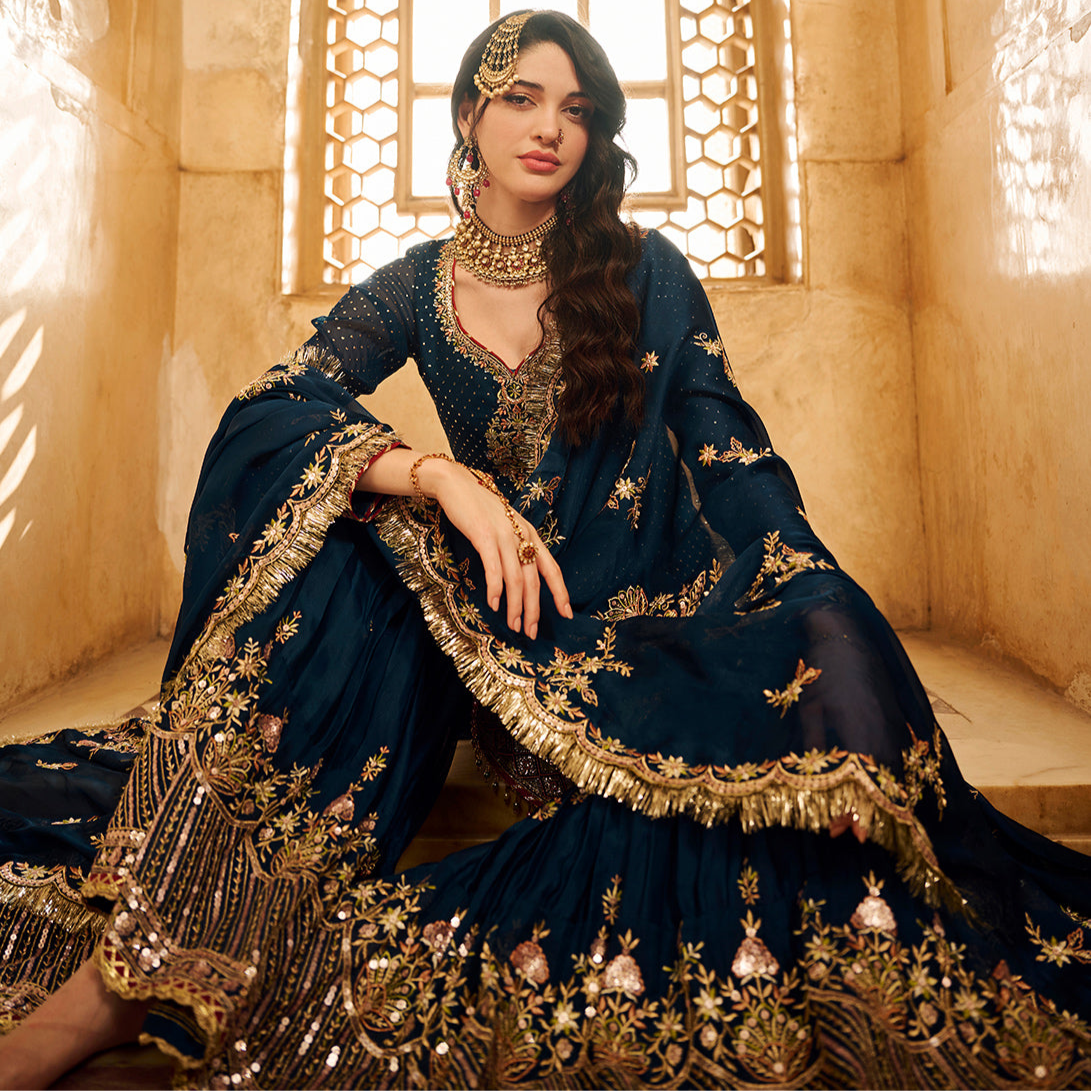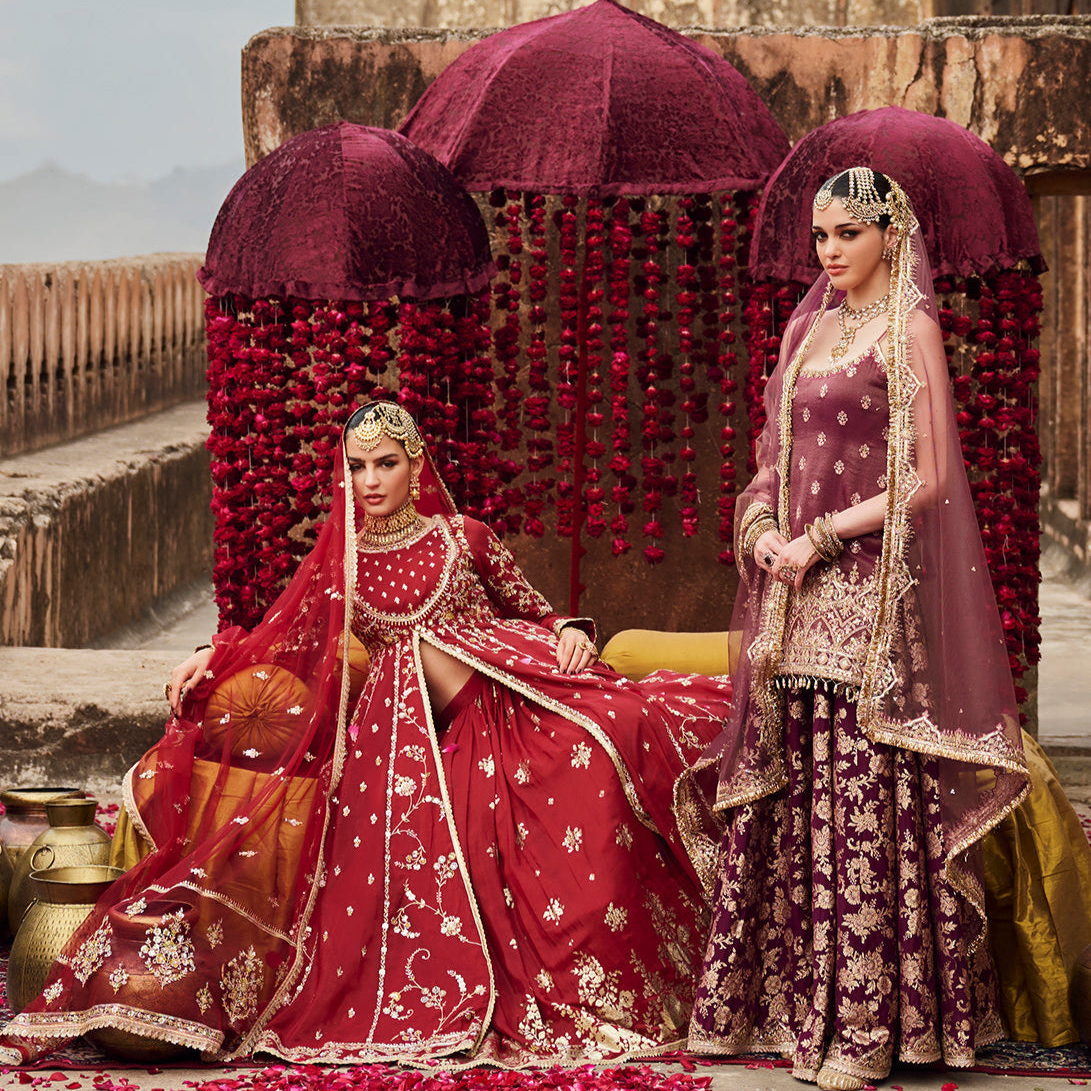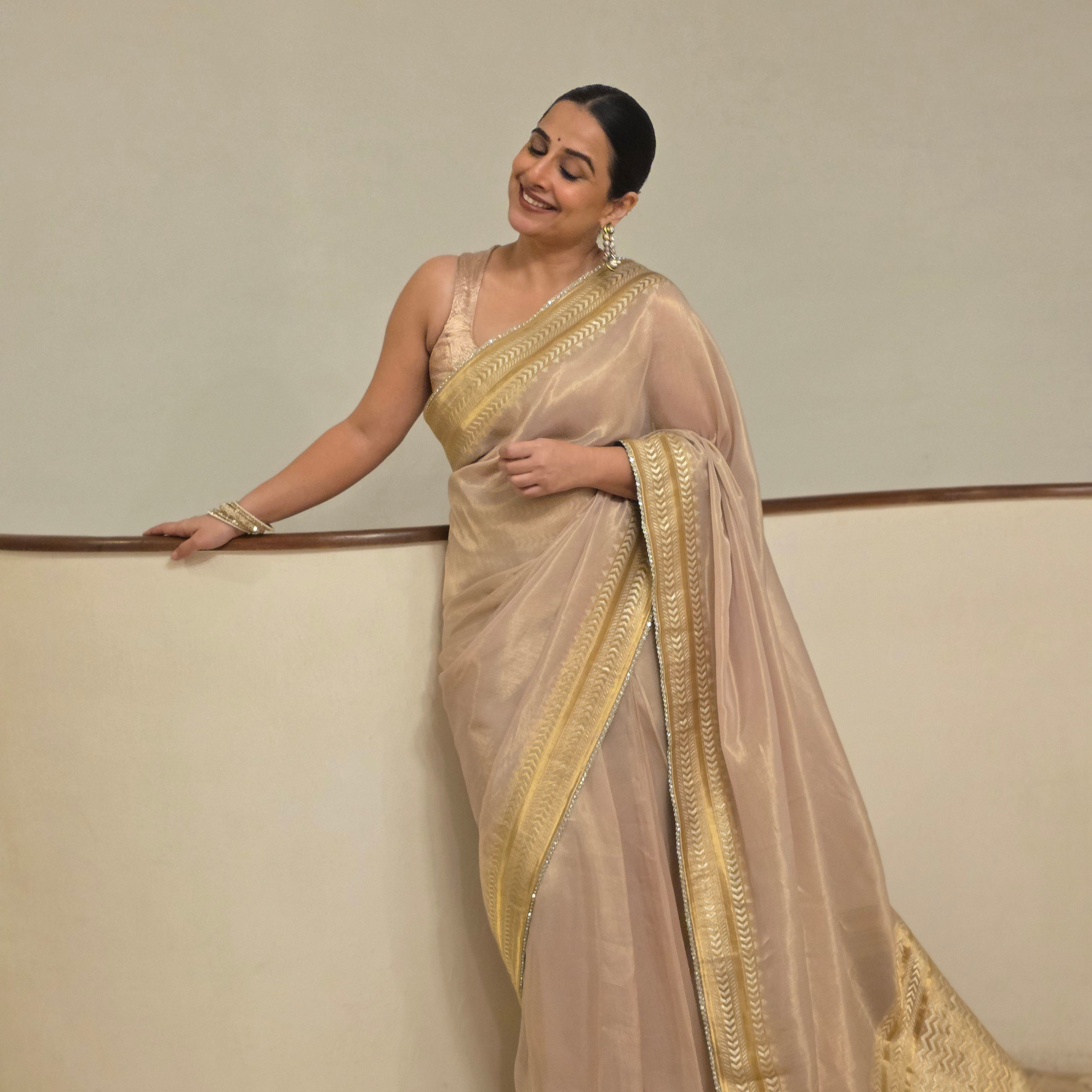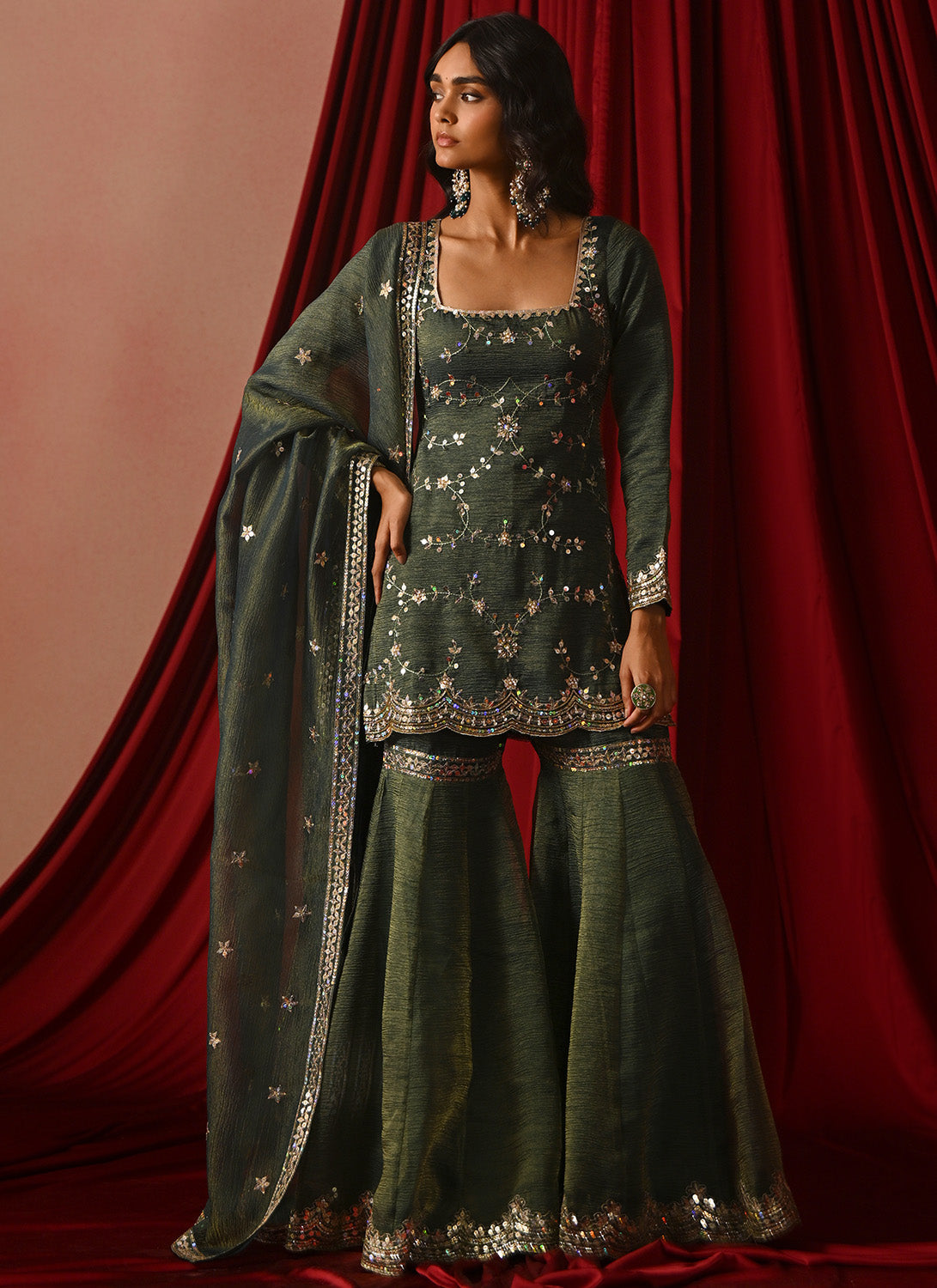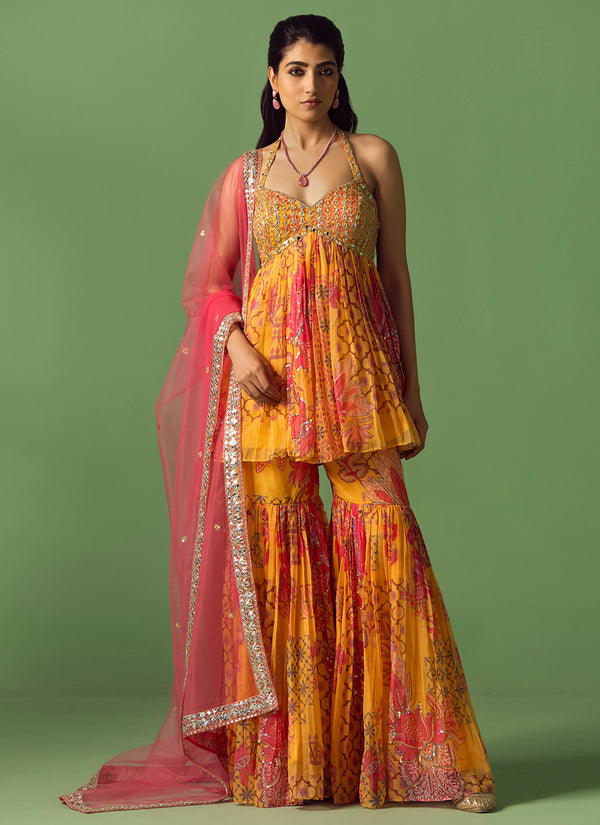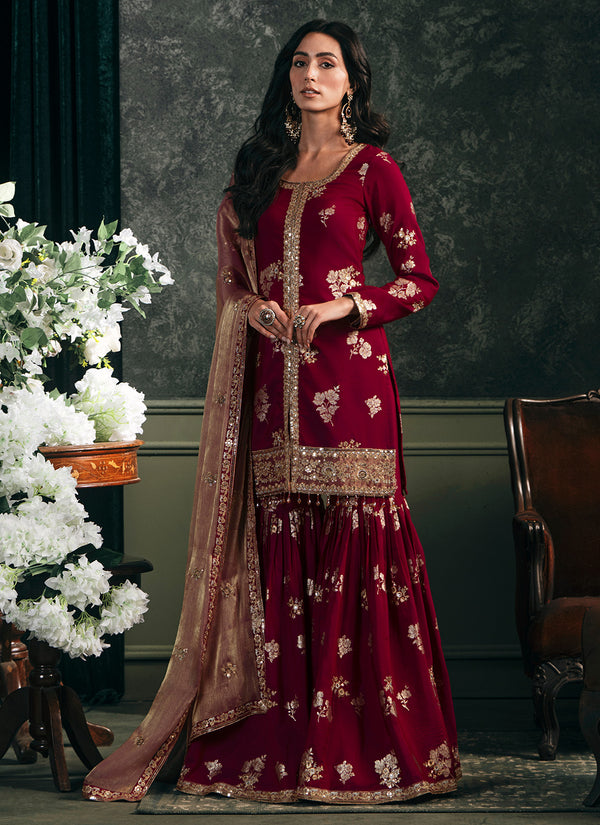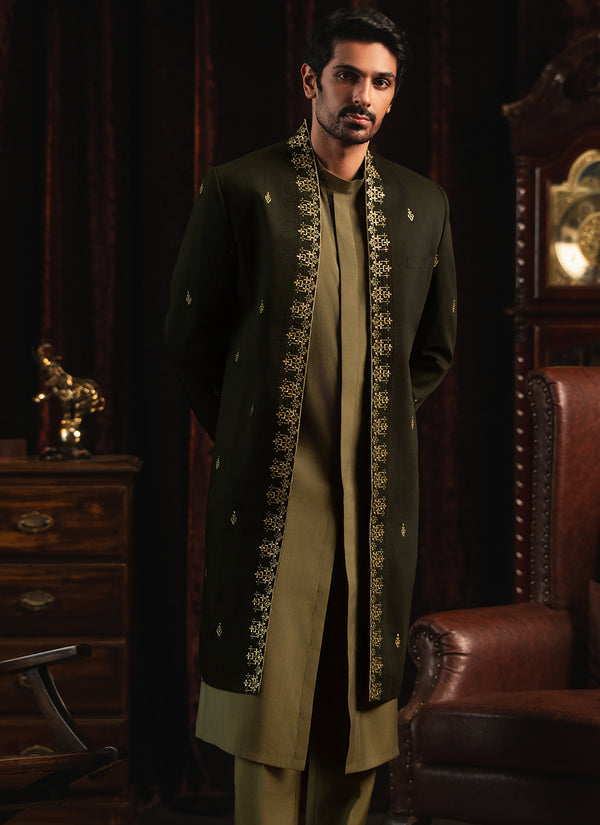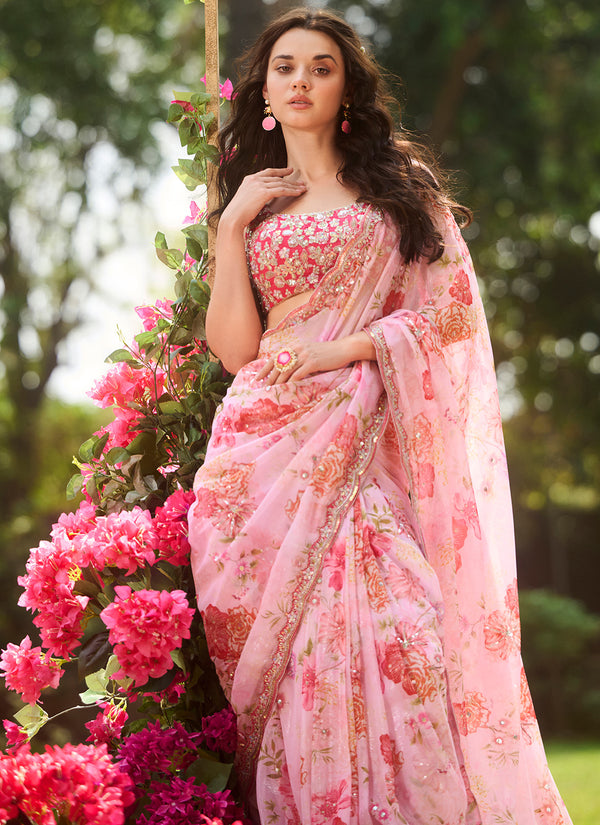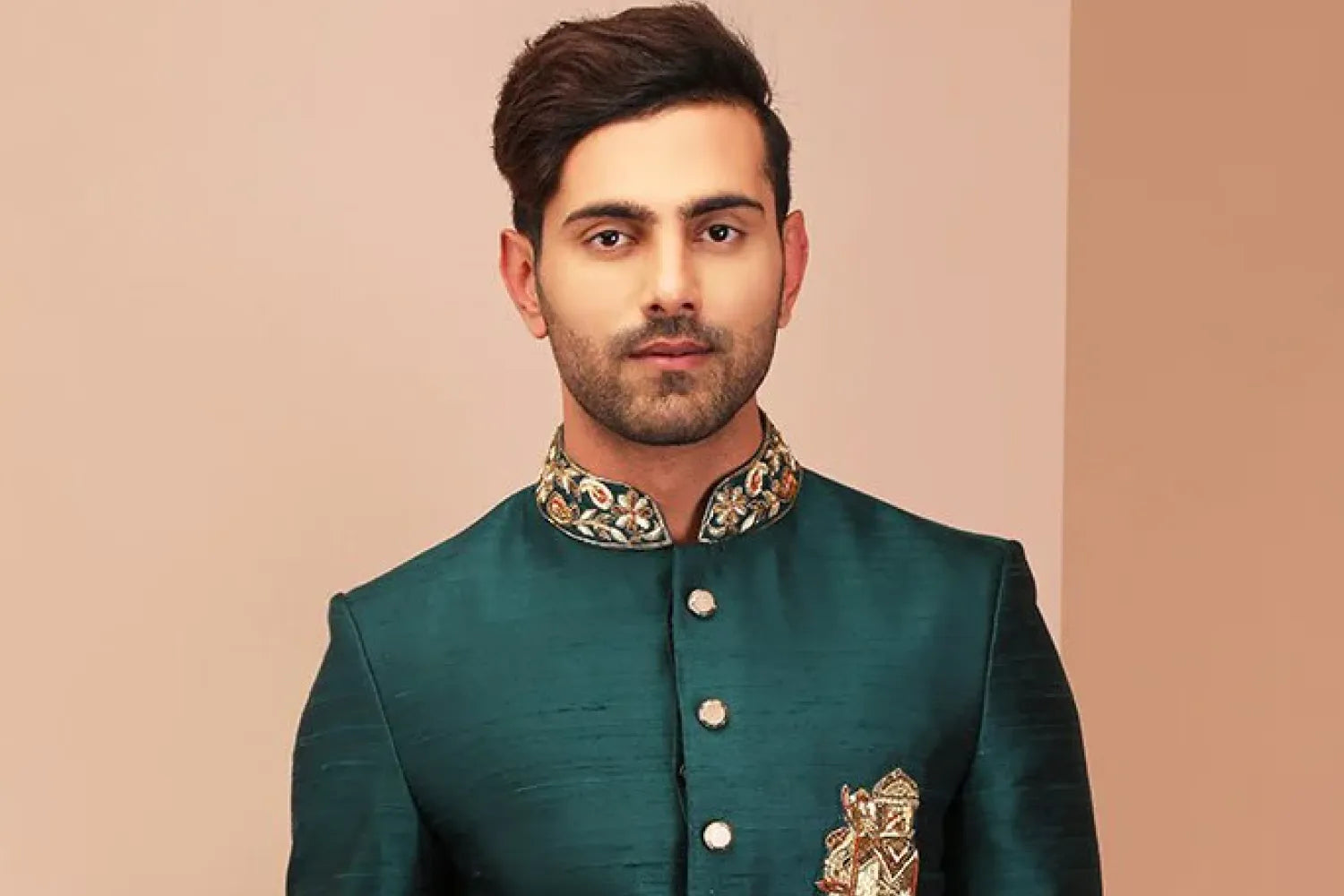
Indian Winter Clothes: Trendy Styles & Tips to Stay Warm
As the temperature drops, dressing for the winter season can become a challenge, especially when it comes to traditional Indian outfits. Balancing warmth and style requires careful choices in fabrics, layering, and accessories.
Winter offers a unique opportunity to get creative with traditional Indian attire. Replacing dupattas with pashmina shawls or embroidered stoles not only provides warmth but also enhances the overall look. You can drape the shawl over your shoulders or style it as a wrap for a sophisticated touch.
Whether it’s a wedding, a festive gathering, or a casual event, Indian winter clothes allow you to embrace the chill without compromising on elegance. From luxurious velvet lehengas to creatively layered sarees, there are endless possibilities to create a stylish look that also keeps you warm.
This guide explores the best ways to stay cozy in Indian ethnic wear while maintaining a sophisticated and chic appearance.
Layer Up in Style: The Perfect Winter Ethnic Look
Indian winter clothes beautifully combine style and functionality, ensuring you can stay warm while embracing the elegance of traditional outfits. Rich fabrics like velvet, brocade, and pashmina offer both warmth and luxury, while full-sleeve designs and creative layering options make traditional wear practical for colder weather.
From swapping dupattas for shawls to experimenting with jackets and capes, there are countless ways to make your ethnic wear winter-appropriate without compromising on charm.
Layering traditional outfits for winter weddings and festive occasions is an art that blends warmth and elegance. By carefully incorporating thoughtful pieces, one can create an ensemble that not only exudes style but also provides the comfort needed in colder weather.
Jacket-Style Sets & Lehengas
Lehengas can be winterized with the right approach. Wear warm leggings underneath your lehenga skirt for additional insulation. Choose a jacket-style choli or pair your lehenga with a stylish cropped blazer for a contemporary twist. Capes and floor-length jackets are also popular choices for a regal look that’s practical in colder weather.
Jacket-style lehengas, such as the Red and Gold Embroidered Pant Set With Jacket, combine traditional aesthetics with a contemporary vibe. The intricate embroidery on the jacket adds grandeur to the outfit, making it a perfect choice for wedding receptions or festive evenings.
Sarees
For sarees, layering is key. Saree lovers can embrace the warmth by pairing their drapes with full-sleeve blouses crafted from luxurious fabrics like velvet or silk. Swap the traditional petticoat for leggings or thermal wear to keep yourself warm without altering the look of the saree.
Pairing a saree with a trench coat or long ethnic jacket can add a dramatic flair while keeping the cold at bay. Pashmina shawls make an excellent substitute for dupattas, providing warmth and a luxurious feel.
A prime example is the Red Embroidered Brocade Saree, which includes a rich silk blouse, ideal for cold-weather events. Additionally, layering with thermal leggings beneath the saree petticoat ensures that warmth is prioritized without compromising the traditional appeal of the saree.
Women's Ethnic Suits
Anarkalis, with their natural layering effect, are perfect for winter. Opt for heavier fabrics like brocade or velvet, and pair them with embroidered shawls or stoles. Adding a pair of ankle boots or closed-toe juttis can further protect you from the chill while keeping your outfit cohesive. These layers, besides being functional, add a luxurious dimension to the outfit. For instance, pairing a Blue Embroidered Brocade Sharara Suit with a matching velvet shawl enhances both warmth and elegance.
The Purple Multicolor Embroidered Peplum Style Punjabi Suit is a winter-ready ensemble that effortlessly combines elegance and comfort. Crafted from rich fabric with detailed embroidery, it adds a vibrant and festive touch to any occasion. The peplum silhouette gives it a contemporary edge, making it both stylish and graceful. Complete the look with traditional juttis or heels for a polished finish.
Ethnic Winterwear for Kids
The Kids Hot Pink Embroidered Peplum Style Punjabi Suit is a perfect winter festive outfit. Crafted in rich fabric with intricate embroidery, it blends warmth with elegance, ideal for family gatherings or celebrations. The peplum silhouette adds a playful touch, while the bright pink hue reflects the cheerful spirit of the season. Pair it with traditional juttis or mojaris to complete the cozy yet festive winter look.
Ethnic Winterwear for Men
 Men's ethnic wear offers a wide range of options for winter. Layering combines style, tradition, and practicality, making it perfect for festive occasions and celebrations. A classic kurta forms the base of the outfit and can be elevated with a Nehru jacket or bandhagala, which adds structure, elegance, and a touch of regal sophistication. These jackets not only enhance the silhouette but also allow for a polished, put-together look suitable for gatherings and formal events.
Men's ethnic wear offers a wide range of options for winter. Layering combines style, tradition, and practicality, making it perfect for festive occasions and celebrations. A classic kurta forms the base of the outfit and can be elevated with a Nehru jacket or bandhagala, which adds structure, elegance, and a touch of regal sophistication. These jackets not only enhance the silhouette but also allow for a polished, put-together look suitable for gatherings and formal events.
The Light Green Hand Embroidered Velvet Jodhpuri Set is a sophisticated winter ensemble for men that perfectly blends tradition with contemporary elegance. Crafted from luxurious velvet, the set provides warmth while maintaining a polished and refined appearance. Intricate hand embroidery adds a festive touch, making it ideal for celebrations, weddings, or formal gatherings.
Jodhpuri suits crafted from velvet or wool blends are excellent choices for formal events, providing warmth and a polished look. Layering a Kurta with a Nehru Jacket not only adds dimension to the outfit but also offers comfort during colder weather.
Winter Accessory Tips for Men
For men, traditional winter accessories like shawls, bandhgalas, and Nehru jackets are perfect additions to ethnic wear. Traditional jackets in brocade or velvet keep the look classic yet winter-appropriate.
Richly embroidered woolen shawls draped over kurtas or sherwanis lend an air of elegance. Whether paired with a sherwani or a simple kurta-pajama, a finely embroidered or pashmina shawl exudes sophistication.
Closed-toe shoes or traditional mojaris complete these warm fits, ensuring both style and functionality.
Additional accessories, such as a matching stole, pocket square, or even traditional footwear like mojaris, can further complement the ensemble. These thoughtful additions balance aesthetics with practicality, allowing men to enjoy the celebrations in style while staying cozy. Overall, winter layering for men reflects a careful blend of tradition, sophistication, and comfort, making it a key element in festive wardrobe planning.
Top 7 Warm Fabrics for Indian Winter Clothes

Choosing the right fabric for Indian winter outfits is essential to ensure both comfort and elegance during the colder months. Certain fabrics are not only designed to keep you warm but also elevate the grandeur of traditional attire.
Velvet is a quintessential choice for winter, thanks to its luxurious texture and excellent insulating properties. It adds richness to outfits like lehengas, shawls, and blouses, making it ideal for grand celebrations.
For instance, the Magenta Multicolor Embroidered Lehenga, crafted with velvet accents, showcases the perfect blend of warmth and opulence, making it a stunning option for weddings or festive evenings.
Raw silk is another top contender, known for its thicker texture and natural sheen. This fabric works beautifully for sarees and Anarkalis, lending a regal and structured look to the outfit.
Brocade and jacquard fabrics are also winter-friendly due to their slightly thicker weaves and ornamental patterns. These materials are a staple for traditional Indian wear, enhancing both style and functionality.
Pashmina, renowned for its unparalleled softness and insulating qualities, remains a classic choice. A pashmina shawl can effortlessly complement sarees, lehengas, or gharara suits, adding a layer of sophistication and warmth.
The Blue and White Floral Printed Gharara Suit, when paired with a pashmina shawl or stole, becomes a perfect example of comfort meeting elegance, suitable for semi-formal occasions or family gatherings.
Wool blends are equally practical, offering a cozy yet stylish option for sarees, dupattas, and stoles. These materials are lightweight yet effective in trapping heat, making them a popular choice for casual winter events.
Tussar silk, slightly heavier than regular silk, is ideal for festive attire during the winter season. Its texture and understated elegance make it a versatile fabric for Anarkalis and sarees.
Lastly, georgette with a warm lining offers the best of both worlds—lightweight movement with added insulation. This fabric is particularly suited for flowy garments like lehengas and sarees, ensuring that you stay comfortable without compromising on style.
Trendy Accessories to Complete Your Winter Look
Accessories are essential for elevating winter ethnic outfits, especially when they serve both functional and aesthetic purposes.
Footwear
Footwear, for instance, plays a pivotal role in enhancing traditional ensembles while keeping you comfortable. Ankle boots with ethnic embroidery or metallic details add a contemporary edge to sarees and lehengas.
Traditional juttis, lined with warm fabric, are ideal for Anarkalis, kurtas, and shararas, offering both warmth and style. Mojaris with wool or fleece lining are another fantastic option, particularly for colder regions, maintaining the traditional charm while keeping feet cozy.
Jewelry
Jewelry choices in winter should harmonize with the outfit’s embellishments and provide a balanced look. For outfits like velvet lehengas or heavily embroidered sarees, understated accessories such as gold or kundan studs, delicate bangles, or a slim chain bracelet let the attire shine.
For simpler ensembles, bold statement jewelry, such as a heavy choker, temple jewelry, or oversized jhumkas, can add a striking visual impact. Adding a traditional touch with accessories like maang tikkas, anklets, or kamarbandhs (waist belts) can further elevate your look for festive or wedding occasions.
Shawls & Stoles
Winter-specific traditional Indian accessories also include shawls and stoles, which are indispensable during the colder months. Ornate pashmina shawls with zari borders, richly embroidered woolen stoles, or even brocade dupattas can be draped elegantly over sarees or lehengas, adding warmth and sophistication. Kashmiri kani shawls, known for their intricate patterns and vibrant colors, pair beautifully with both casual and festive outfits.
Complete the Look
To complete the look, consider incorporating practical yet stylish bags. Embroidered potli bags, zari-adorned clutches, or beaded handbags add a luxurious touch to your ensemble.
Additionally, layering outfits with lightweight capes or jackets featuring traditional mirror work, zardozi embroidery, or sequin details not only ensures warmth but also introduces a regal flair to the overall attire.
Whether it's through footwear, jewelry, or layered accessories, traditional Indian winter accents ensure you stay warm, stylish, and rooted in cultural charm.
Shop for the Perfect Indian Winter Clothes Online at Lashkaraa
Lashkaraa is your one-stop destination for stylish and warm Indian winter clothes, offering a curated collection designed to blend tradition with seasonal comfort.
Explore luxurious velvet lehengas, embroidered Anarkalis, or sarees with full-sleeve blouses. Lashkaraa has options to suit every occasion, from grand winter weddings to intimate festive gatherings.
Our carefully curated collections feature rich fabrics like brocade, silk, and velvet, adorned with intricate handwork, zari embroidery, and sequin embellishments, ensuring elegance and warmth.

